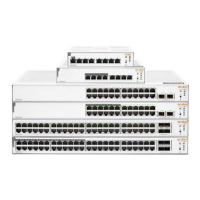
Do you have a question about the HPE Aruba Instant On 1830 Switch Series and is the answer not in the manual?
Introduction to the Aruba Instant On 1830 Switch Series, highlighting its benefits for small businesses.
Highlights the main features of the Aruba Instant On 1830 Switch Series, including PoE support and connectivity.
Summarizes key benefits like simplicity, security, and value for small businesses.
Details the plug-and-play nature and ease of setup with mobile app for the switch series.
Explains built-in security features like Global Storm Control, TPM, and VLANs.
Covers warranty, support, and lack of additional licensing or subscription fees.
Describes the mobile app's guided setup and remote management capabilities.
Explains how Instant On switches prioritize power for APs and voice traffic.
Details the mobile app's role in simplifying configuration and remote management.
Describes the interface for viewing network devices and troubleshooting connectivity.
Explains the role of 2FA in mitigating risk from compromised login credentials.
Details how built-in features protect the network from external threats.
Confirms that all features are included, with no recurring fees, plus warranty and support.
Describes remote management of multiple sites, networks, and multi-tenant deployments.
Details various management methods including cloud, local GUI, and secure sessions.
Highlights the ease of managing networks via cloud-hosted web interface and mobile app.
Explains the intuitive Web GUI for managing individual switches, supporting multiple sessions.
Ensures secure management sessions through HTTPS encryption for data protection.
Provides notifications and scheduling for firmware updates via mobile app and web portal.
Allows backing up and restoring configuration settings for firmware upgrades or deployment.
Enables plug-and-play operation and fallback to a default static address.
Allows users to control the locator LED for easy identification of specific switches.
Provides an at-a-glance view of status, activity, and speed via per-port indicators.
Provides secure management access to the switch for administrators via a specified VLAN.
Allows automatic synchronization of switch date and time for accurate event tracking.
Manages network traffic prioritization for improved performance.
Prioritizes time-sensitive packets like VoIP and video using DSCP or 802.1p.
Details available port types and auto-negotiation features.
Automatically adjusts for straight-through or crossover cables on all ports.
Supports half/full-duplex auto-negotiation for doubled port throughput.
Provides 1G fiber connections for uplinks and long-distance communication.
Details Class 4 PoE support, providing up to 30W per port for various devices.
Describes Class 3 PoE support for powered devices (PDs), receiving up to 13W.
Automatically assigns required power to a port for a PD device using LLDP.
Supports multiple methods for allocating PoE power for efficient energy savings.
Allows scheduling PoE power supply to connected devices based on day/time.
Enables scheduling to enable/disable individual ports or PoE delivery on specific ports.
Details core switching functionalities like flow control and STP.
Provides a flow-throttling mechanism to prevent packet loss at congested nodes.
Supports 802.1D STP and RSTP for faster convergence and loop prevention.
Drops BPDU packets when STP is enabled globally but disabled on a specific port.
Detects loops in networks where STP is disabled or not running.
Intelligently forwards IPv4 multicast traffic only to requesting ports.
Groups multiple ports into trunks for high-bandwidth connections using LACP.
Advertises and receives management information from adjacent network devices.
Extends LLDP to store QoS and VLAN values for automatic device configuration.
Partitions the network into logical segments for administration, security, and traffic management.
Allows traffic on a port or VLAN to be sent to a network analyzer for monitoring.
Places ports in a suspended state upon defined error conditions for self-healing.
Covers TPM security, DoS protection, and storm control.
Uses a Trusted Platform Module for secure hardware-based key generation and storage.
Manages high-volume traffic and prevents denial-of-service (DoS) attacks.
Protects against LAN flooding by unknown unicast, broadcast, and multicast traffic.
Details performance metrics and energy-saving features.
Compliant with 802.3az to save energy during periods of low data activity.
Saves power by automatically shutting down inactive ports, restoring power on link detection.
Uses variable speed fans for efficient cooling, reducing noise and power consumption.
Fan-less design for specific models ideal for acoustically sensitive environments.
Describes features accessible via the local web management interface.
Guides users through automatic configuration of initial settings like IP address and system time.
Supports up to 9216 bytes frame size for improved large data transfer performance.
Enhances security with password strength checking, aging, and management.
Encrypts HTTP traffic and secures access to the local browser-based management.
Provides secure file transfer mechanisms using SCP or TFTP.
Provides independent primary and secondary software images for backup during upgrades.
Facilitates remote management and monitoring via an SNMP management station.
Provides tools for system diagnostics and troubleshooting.
Provides detailed information for problem identification and resolution.
Displays active users, their IP addresses, and session durations.
Supports storing events on a remote syslog server.
Detects and reports cabling issues like opens or shorts on copper links.
Supports ICMP for sending ping requests to IPv4 addresses.
Includes summary information for the switch configuration, statistics, and log messages.
Enables traffic forwarding and supports up to 16K MAC address entries.
Details limited lifetime support, 24x7 phone support, and community support.
Lists Build-to-Order (BTO) models of the Aruba Instant On 1830 Switch Series with SKUs.
Details rules for localization (power cords) and transceiver compatibility.
Lists available SFP transceivers compatible with the switch series and their SKUs.
Details the RJ-45 and SFP ports available on each switch model, including PoE support.
Provides dimensions and weight for each model in the Aruba Instant On 1830 Switch Series.
Specifies the processor, memory, and packet buffer for each switch model.
Lists performance metrics like latency, throughput, and MAC address table size for each model.
Details operating and non-operating temperature and humidity ranges for the switches.
Provides acoustic measurements (LWAd, LpAm) for different traffic and PoE load conditions.
Details frequency, voltage, current, and power ratings for each switch model.
Lists safety compliance standards like IEC, UL, and CAN/CSA for the switch series.
Specifies emissions compliance standards such as VCCI, FCC, and ICES.
Details immunity standards for ESD, Radiated, EFT/Burst, Surge, Conducted, and Flicker.
Lists supported device management methods including cloud, web browser, and SNMP.
Describes supported mounting positions and racking compatibility for the switches.
Lists compatible transceivers and their part numbers for each switch model.
Lists all supported IEEE and IETF standards for the switch series.
Lists IEEE standards supported by the switch series, including Ethernet, PoE, and VLANs.
Lists IETF RFCs supported for various network functions.
Lists IETF RFCs related to management and monitoring support.
Details the changes made to the document across different versions.
Copyright notice and legal disclaimer for the document content and usage.
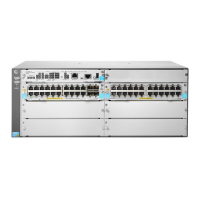
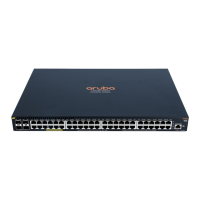
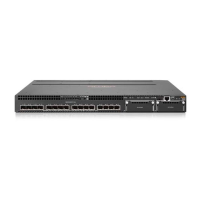
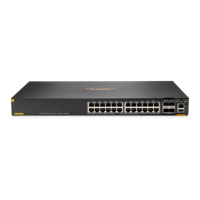
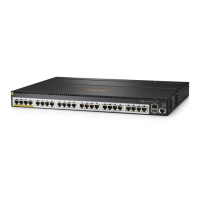
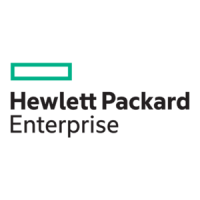

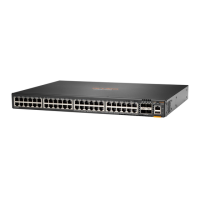

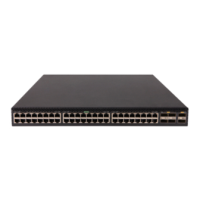
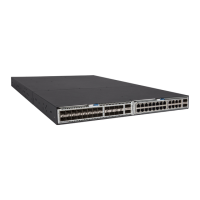
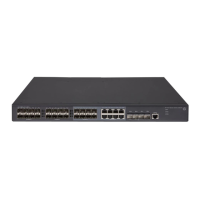
